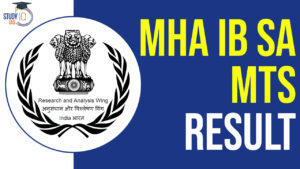Daily Current Affairs for UPSC 2023
Q) Which one of the following specifically represents boundary between Arunachal Pradesh and Tibet?
- McMahon Line
- Johnson-Ardagh Line
- The Radcliffe line
- Durand Line
Daily Current Affairs for UPSC – 15 March 2023
Explanation:
- Option (1) is correct: The McMahon Line serves as the de facto boundary between China and India in the Eastern Sector. It specifically represents the boundary between Arunachal Pradesh and Tibet, from Bhutan in the west to Myanmar in the east. China has historically disputed the boundary and claims the state of Arunachal Pradesh as part of the Tibetan Autonomous Region (TAR). The McMahon Line was drawn during the Simla Convention of 1914, officially described as the Convention Between Great Britain, China, and Tibet.
Q) With reference to the Domestic Systemically Important Banks (D-SIBs), consider the following statements?
- The concept of D-SIBs originated after the 2008 global financial crisis.
- RBI has classified Housing Development Finance Corporation Limited Bank as D-SIBs.
- D-SIBs are not required to maintain a higher capital conservation buffer in addition to the capital conservation buffer.
Which of the statements given above are correct?
- 1 and 2 only
- 2 and 3 only
- 1 and 3 only
- 1, 2 and 3
Explanation:
- Statement 1 is correct: A D-SIB is a bank that is considered to be so important to the financial system that its failure could cause significant disruption. These banks are perceived as banks that are ‘Too Big To Fail (TBTF)’ because of their size, cross jurisdictional activities, complexity and lack of substitute and interconnection. The concept of D-SIBs originated after the 2008 global financial crisis.
- Statement 2 is correct: The crisis which highlighted the need to identify and regulate banks that pose a potential risk to the stability of the financial system. The Financial Stability Board (FSB), in consultation with the Basel Committee on Banking Supervision (BCBS) and national authorities, has identified Global Systemically Important Banks (G-SIBs) since 2011. In line with the G-SIBs, the Reserve Bank of India (RBI) identified Indian banks that are important to the country’s financial system and designated them as D-SIBs. RBI has classified SBI, ICICI Bank, and HDFC Bank as D-SIBs.
- Statement 3 is incorrect: Higher capital conservation buffer: D-SIBs are required to maintain a higher capital conservation buffer in addition to the capital conservation buffer required for all banks under Basel III norms. The buffer ranges from 0.20% to 0.80% of their total risk-weighted assets (RWAs), depending on the bank’s systemic importance.
Q) With reference to Archaeological Survey of India (ASI), consider the following statements:
- ASI is under the Ministry of Culture.
- It regulates Antiquities and Art Treasure Act, 1972.
- ASI has a separate vigilance cell to function as a deterrence against theft of antiquities.
Which of the statements given above is/are correct?
- 1 and 3 only
- 2 and 3 only
- 1 and 2 only
- 1,2 and 3
Explanation:
- Statement 1 is correct: A recent investigation on illicit antique trading networks has pointed out the inability of Archaeological Survey of India (ASI) in protecting and preserving Indian cultural heritage. ASI under the Ministry of Culture is the premier organization for the archaeological research and protection of the cultural heritage of the nation. It was established in 1861 and entrusted with conducting archaeological research and conserve cultural monuments in the country.
- Statement 2 is correct: It regulates all archaeological activities in the country as per the provisions of the Ancient Monuments and Archaeological Sites and Remains Act, 1958. It also regulates Antiquities and Art Treasure Act, 1972.
- Statement 3 is incorrect: ASI has no vigilance or monitoring cell to function as a deterrence against theft of antiquities. There is no national policy on archaeological exploration and excavation.
Q) Consider the following statements about Vibrant Villages Programme (VVP):
- It is a Centrally Sponsored Scheme.
- It is launched for the comprehensive development of Coastal villages.
Which of the statements given above is/are correct?
- 1 only
- 2 only
- Both 1 and 2
- Neither 1 nor 2
Explanation:
- Statement 1 is correct: Recently, Government has approved a Centrally Sponsored Scheme ‘Vibrant Villages Programme’ for the comprehensive development of border villages.
- Statement 2 is incorrect: The scheme has been approved for the development of the villages in 46 border blocks of 19 districts in 4 States and 01 UT viz. Arunachal Pradesh, Himachal Pradesh, Sikkim, Uttarakhand and Ladakh (UT) abutting the northern border. Vibrant Villages Programme aims for convergence of existing schemes of Central and State Government through formulation of District Convergence Plan.
Q) Consider the following statements about the Gaganyaan mission:
- It will be the first of ISRO’s human spaceflight missions.
- This program will make India the fifth nation to launch a manned spaceflight mission.
Which of the statements given above is/are correct?
- 1 only
- 2 only
- Both 1 and 2
- Neither 1 nor 2
Explanation:
- Statement 1 is correct: According to Government of India, budget of Rs. 9023 Crore has been allocated towards achieving the objectives of Gaganyaan mission. Gaganyaan programme is to demonstrate human spaceflight capability to Low Earth Orbit and safe return. It will be the first of ISRO’s human spaceflight missions.
- Statement 2 is incorrect: This program will make India the fourth nation to launch a manned spaceflight mission after the US, Russia, and China.


 SSC Stenographer 2024 Notification Out a...
SSC Stenographer 2024 Notification Out a...
 IB SA MTS Final Result 2024 Out at mha.g...
IB SA MTS Final Result 2024 Out at mha.g...
 Model Skill Loan Scheme, Eligibility, Re...
Model Skill Loan Scheme, Eligibility, Re...

















